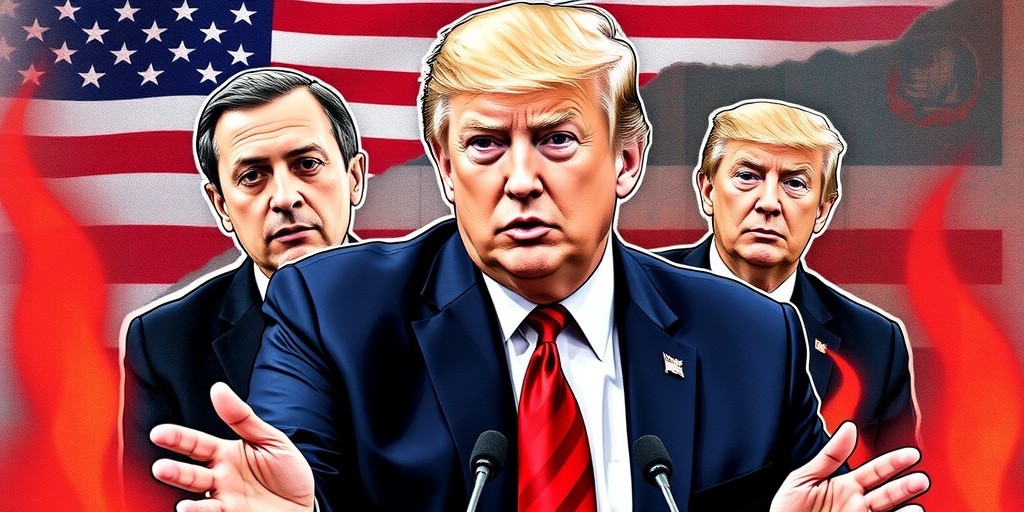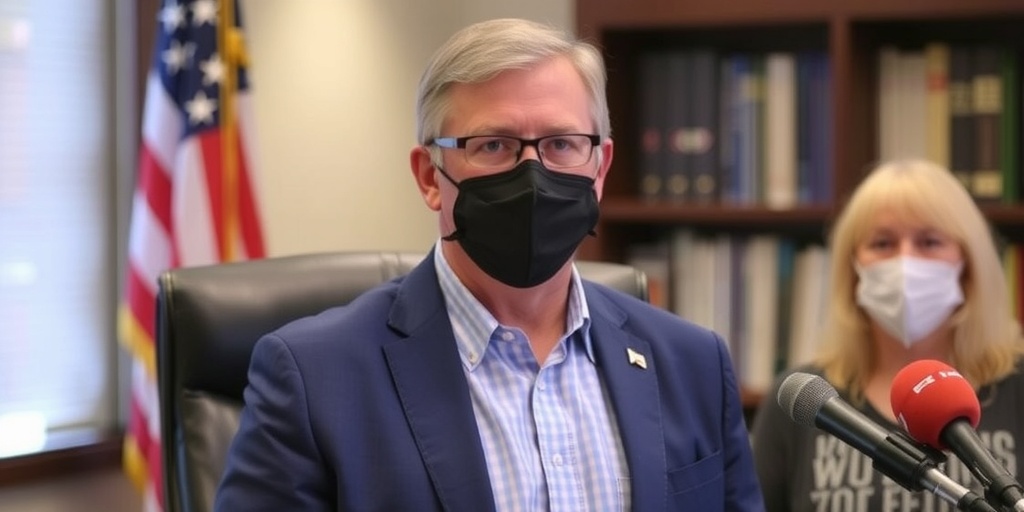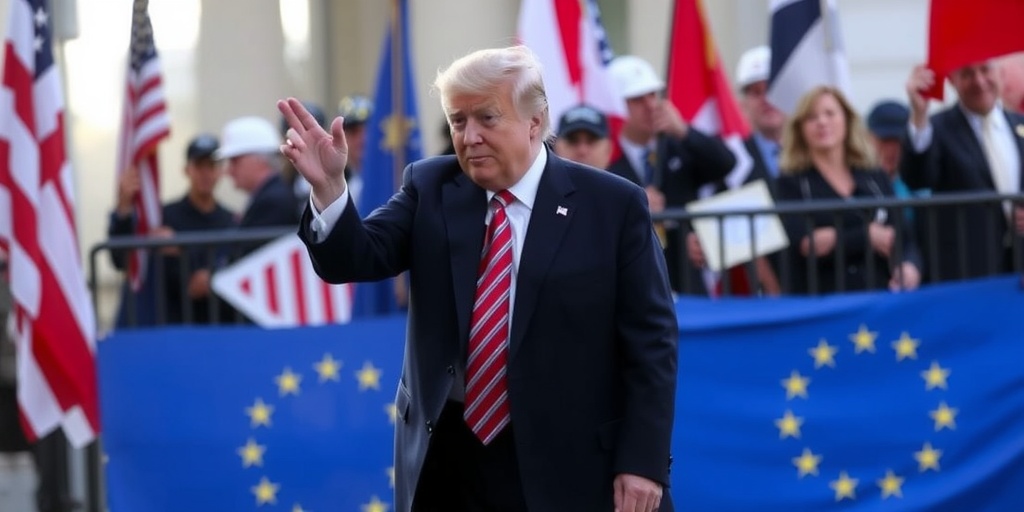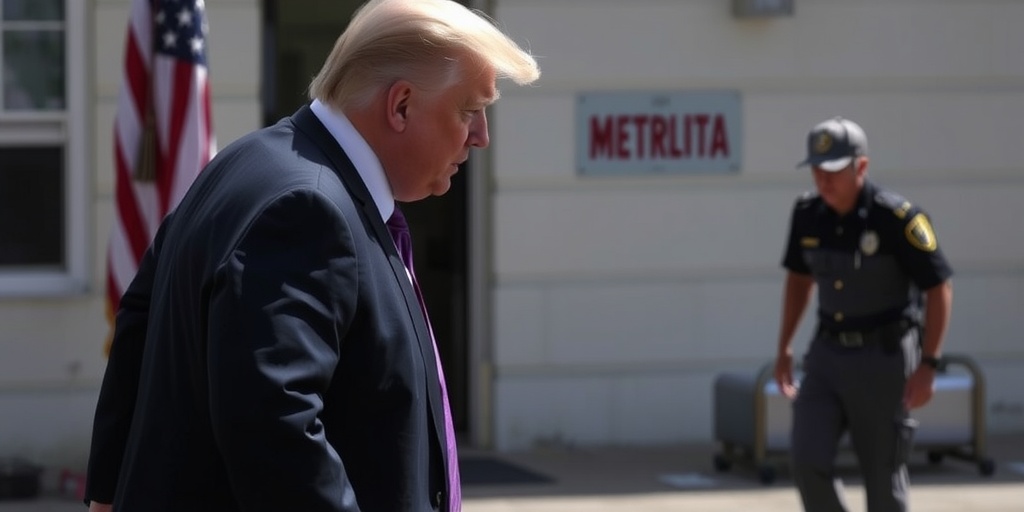Now Reading: Trump Officials Caution on Tariff Impact as Prices Rise and Stocks Decline
-
01
Trump Officials Caution on Tariff Impact as Prices Rise and Stocks Decline
Trump Officials Caution on Tariff Impact as Prices Rise and Stocks Decline

Title: Economic Uncertainty Looms as Trump Implements Global Tariffs
In a bold move ahead of implementing extensive global tariffs, President Trump and his senior advisors have attempted to prepare the American public for inevitable economic challenges. Assuring citizens that the anticipated fallout from their aggressive trade policies would be temporary and beneficial in the long run, they suggested a strategy akin to a “painful medical procedure” meant to heal a “sick patient” of the economy. However, the reaction from investors and businesses on Thursday indicated that the U.S. economy may not be in a position to bear such risks.
Global stock markets saw significant declines as economists raised alarms about a potential recession, prompting consumers to brace themselves for rising prices on essential commodities, including vehicles, food, and clothing. The turbulence highlighted the stakes involved in Mr. Trump’s aggressive trade agenda, which he believes will set the stage for an economic boom once tariffs recalibrate trade relationships and elevate domestic production and revenue.
Despite the administration’s assurances, the immediate impact of these tariffs is projected to escalate prices for American consumers, compounding the challenges posed by years of rising costs. Economists project a slowdown in consumer spending and business investment, which could precipitate a recession, with some estimating a more than 50 percent chance of an economic downturn in the near future.
An analysis conducted by the Yale Budget Lab predicts that the tariff scheme could drive prices up by 2.3 percent in the short term. This spike could equate to an average loss of purchasing power of approximately $3,800 per household, when adjusted for 2024 dollars. Martha Gimbel, the executive director of the Yale Budget Lab, emphasized that stakeholders should prepare for inevitable price increases, declaring, “Prices are going to go up, period.” Gimbel noted that companies would feel the immediate effects of these tariffs, which are substantial enough that businesses cannot simply absorb them.
In an interview following the market turmoil, Stephen Miran, head of the president’s Council of Economic Advisers, conceded that the economy might experience “bumps” during this transitional phase of implementing tariffs, tax cuts, and deregulation. Miran underscored that while the market reactions are understandable given the unprecedented nature of Trump’s policy measures, he maintains that the ultimate costs of these tariffs will shift to foreign nations, contradicting the belief that American consumers will shoulder the burden.
However, this view sharply contrasts with prevalent economic opinions asserting that Trump’s tariff strategy may further exacerbate inflation issues, jeopardizing the Federal Reserve’s recent efforts to stabilize prices. Alan Detmeister, a former Federal Reserve economist, forecasted that inflation rates could soar to 4.5 percent by year’s end and may peak near 5 percent in early 2026, suggesting prolonged inflation that could linger around 3 percent well into 2027.
Under the current tariff proposal, the United States is set to impose a 10 percent charge on imports alongside a slew of tariffs targeting countries accused of unfair trade practices. As these tariffs loom, global allies scramble to devise responses, engaging in discussions about potential negotiations with an administration notorious for its fluctuating positions on trade agreements.
Economists have sounded alarm bells about the possibility of a protracted trade war igniting a global economic recession. Mark Zandi, chief economist at Moody’s Analytics, sketched a grim scenario where the complete implementation of tariffs, coupled with retaliatory measures from other nations, leads to a recession starting imminently and extending into the following year. Zandi predicts a potential 2 percent drop in economic growth and an unemployment rate climbing to 7.5 percent.
The labor market, which had shown signs of cooling prior to Trump’s trade war declaration, may experience a severe blow, with expectations of rising unemployment rates. With some economists raising their unemployment forecasts to as high as 5 percent this year, concerns grow regarding workers’ ability to secure higher wages and keep pace with increasing living costs. This situation could further erode consumer spending power and propagate a more significant economic downturn.
Other economists, such as Gregory Daco from EY-Parthenon, warn that the tariffs will not only inflate the costs of imported goods but will also compel domestic producers to hike prices, effectively creating a ripple effect throughout the economy where even domestically produced goods could see significant price shocks.
In the retail sector, food service providers expect tariffs to push food and packaging costs higher, while grocers highlight the looming disruptions in produce prices globally. Toy manufacturers predict unavoidable price increases as roughly 77 percent of toys sold in the U.S. come from China, which will be heavily impacted by tariffs.
Leading voices within the Trump administration have sought to dispel market fears, insisting that the nation will eventually benefit from these trade policies. Trump has painted his overall strategy as a long-term solution, aiming to attract major global corporations to increase domestic production. He has suggested that his tax policy proposals, including benefits for purchasing U.S.-made vehicles, may alleviate economic strain caused by tariffs.
As the nation braces for the immediate consequences of these aggressive tariff implementations, the sentiments of patience echoed by Vice President JD Vance aim to reassure the public that while economic transitions may be rocky, they are paved with longer-term benefits. The future effects of Trump’s tariffs remain uncertain, leaving many to ponder the potential challenges that lie ahead for the U.S. economy.
Stay Informed With the Latest & Most Important News
Previous Post
Next Post
-
 01New technology breakthrough has everyone talking right now
01New technology breakthrough has everyone talking right now -
 02Unbelievable life hack everyone needs to try today
02Unbelievable life hack everyone needs to try today -
 03Fascinating discovery found buried deep beneath the ocean
03Fascinating discovery found buried deep beneath the ocean -
 04Man invents genius device that solves everyday problems
04Man invents genius device that solves everyday problems -
 05Shocking discovery that changes what we know forever
05Shocking discovery that changes what we know forever -
 06Internet goes wild over celebrity’s unexpected fashion choice
06Internet goes wild over celebrity’s unexpected fashion choice -
 07Rare animal sighting stuns scientists and wildlife lovers
07Rare animal sighting stuns scientists and wildlife lovers





















